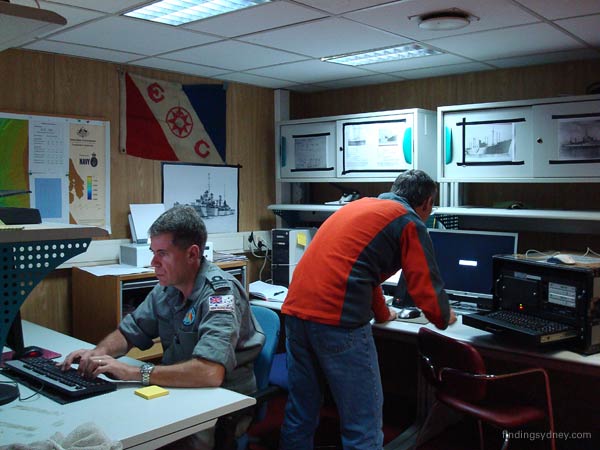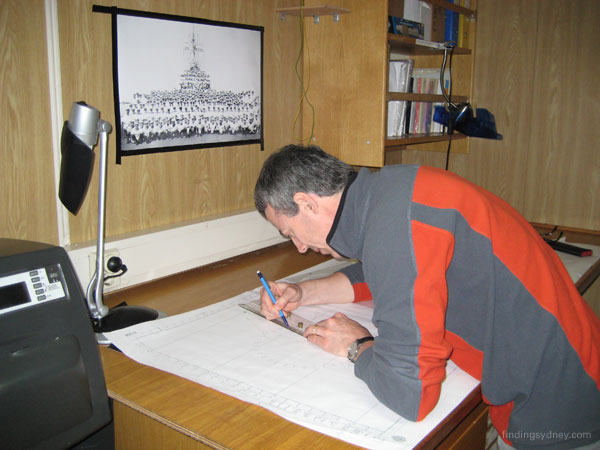David Mearns - Search Director, The Finding Sydney Foundation
With Ophelia out of the way we were able to resume the search today and start to make a dent in the search box. However you compare it, our search box is extremely large. In marine terms it measures roughly 1,800 square nautical miles (a nautical mile is 15% longer than a statute mile), or about 2.5 times larger than the ACT. It is by far the largest area I have ever set out to cover in a shipwreck search project.
Another way to think about this search is to place yourself in a location on land, and imagine a box that extends 39 kilometres in every direction (i.e. to the north, south, east and west). The land will have areas that are flat and sandy, but also areas that are rocky and hilly. Within that enormous area the lost object to be found can be the size of HMAS Sydney (171.4 metres long and 17.3 metres wide), but in the case of Kormoran it is probably broken into a number of smaller pieces scattered about. Finally, imagine the land you are searching is flooded with several thousands of metres of water and this will give you an idea of the challenge we face.
It was very good to be back on the hunt. John Perryman and I have set up our workspace in a room immediately adjacent to the survey lab. Here we can monitor the incoming SM30 sonar imagery on our own computer and be in direct contact with the Williamson & Associates sonar operators and the ship's bridge by telephone. Our space also doubles as a library for research documents and includes a chart table for navigational plotting.

Above Photograph - Workspace for the Finding Sydney Foundation and RAN Historian John Perryman

Above Photograph - David Mearns working on a Mercatorial Plotting Sheet

Above Photograph - A shelf containing the 1998 Parliamentary Enquiry Volumes on the sinking of HMAS Sydney.
John Perryman - Senior Navy Historian (Observer)
With the weather having improved considerably throughout the day we are now back in our search box, with our sonar deployed and our spirits rising following the challenges of the last few days.
News of the discovery of another World War II shipwreck by the Norwegian mine-hunter HNOMS Tyr, was also seen as a very good omen. Tyr was taking part in a multi-national training exercise when she discovered the wreck of the Royal Navy destroyer HMS Hunter in 1000 feet of water. Hunter was sunk by German naval forces during the Narvik campaign of 1940. Of her crew of 145, 110 lost their lives.
As if to reinforce the purpose of our own search, one of Hunter’s survivors, Fred Ward, spoke of his great sense of relief at knowing the final resting place of so many of his comrades. With this in mind the search team continues to monitor the numerous displays and monitors in the survey room for the first indications of a debris field that will lead us to Kormoran and Sydney.
For additional information concerning the discovery of HMS Hunter go to: http://news.bbc.co.uk/1/hi/uk/7283100.stm
IMPORTANT NOTICE: The Material (including photographs) available in the "Press Room" section of this Website may be used/reproduced unaltered by your organisation (unless stated otherwise within the content description) subject to the terms and conditions set out in the Legal Section AND any Material (including photographs) which you use/reproduce must credit the source as "The Finding Sydney Foundation" and, as an option, you may also link the source statement with the website address http://www.findingsydney.com/.